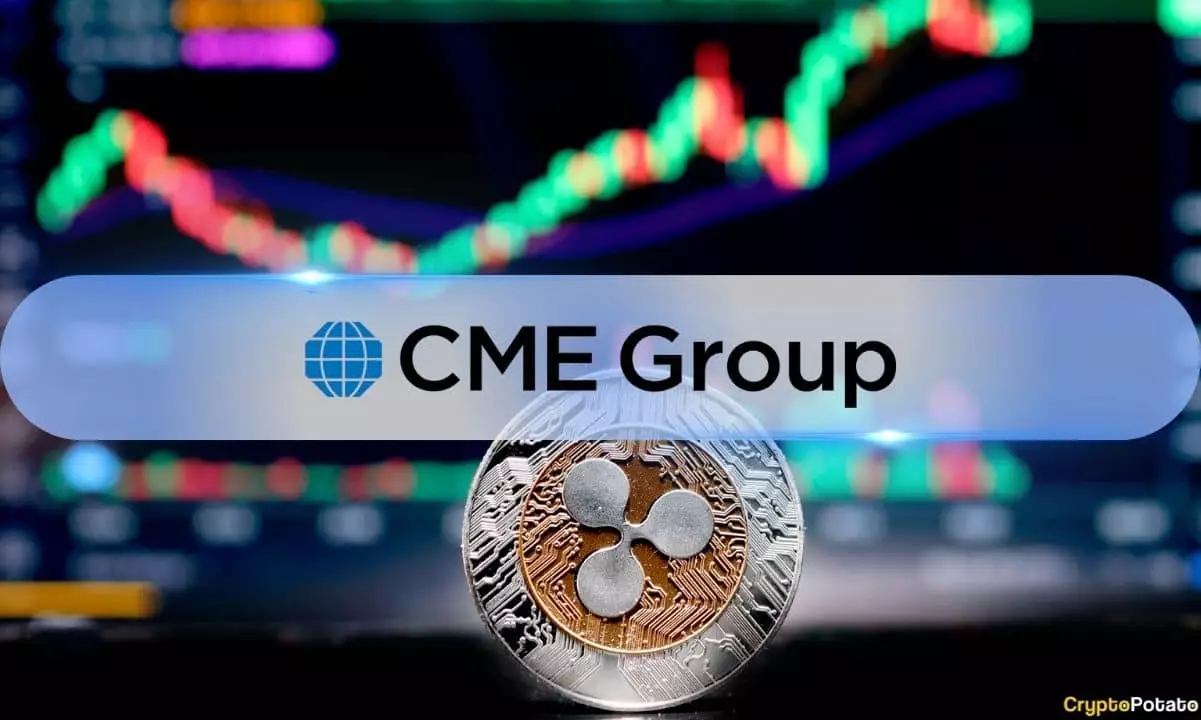On May 19, the Chicago Mercantile Exchange (CME) crossed a threshold that could redefine the cryptocurrency trading landscape by introducing futures contracts for XRP, Ripple’s native digital currency. The implications of this development extend beyond mere trading mechanics; it represents a significant institutional validation of XRP, coming on the heels of futures offerings for Bitcoin, Ethereum, and Solana. While some may view this as just another financial product, the strategic timing and implications for larger market trends deserve deeper scrutiny.
Institutional-Grade Derivatives: A Double-Edged Sword
The launch of XRP futures contracts provides a cash-settled means of trading, allowing investors to speculate on the price movements of XRP without ever needing to hold the physical asset. One cannot ignore the irony of this situation: While proponents of cryptocurrencies preach decentralization and asset ownership, the introduction of such derivatives seems to diminish those very tenets. The question arises: Is this move promoting wider acceptance of crypto, or is it merely institutional players entering a space they can control?
Accommodating various trading strategies, CME offers contracts in different sizes—standard and micro—tailored for both retail and institutional investors. The standard contract covers 50,000 tokens, while the micro version deals with 2,500 XRP. This could have the effect of democratizing access to crypto trading for smaller players, providing an opportunity to dip into the market without overwhelming exposure. But one must also wonder, are we sacrificing authenticity and the original spirit of cryptocurrency for the sake of convenience?
A Legal Quagmire: The Ripple vs. SEC Saga
Adding an additional layer of complexity to this launch is the ongoing legal battle between Ripple and the U.S. Securities and Exchange Commission (SEC). Just days before the futures rollout, a judge denied a joint motion for a $50 million settlement—a decision that could have signaled a more favorable regulatory environment for the cryptocurrency. With the court asserting that Ripple’s programmatic sales of XRP did not constitute security offerings, one must ask: how much does legal uncertainty undermine investor confidence?
Despite the bullish undertones of institutional adoption, XRP’s price performance has been lackluster, even dipping 1.3% within a 24-hour period. This muted response reflects the market’s pervasive apprehensions regarding regulatory frameworks and operational legitimacy. The trading community seems to be in a state of ambivalence, oscillating between optimism spurred by institutional involvement and caution rooted in ongoing legal disputes.
Fee Structures: Navigating the Maze
While the introduction of XRP futures is undoubtedly groundbreaking, the fee structures reveal another layer of tactical maneuvering that could alienate certain investor demographics. Individual members enjoy a lower fee rate, while non-members face significantly higher costs. This disparity effectively creates an environment where only the ‘elite’ or well-connected players can maximize their trading efficiency. Perhaps this strategy is logical from a business perspective, but it raises ethical questions regarding accessibility in a market that claims to be revolutionizing financial inclusivity.
Furthermore, the rigorous requirements for block trades and the strict reporting windows are barriers that may deter smaller investors from fully participating in this new opportunity. It could be argued that while the CME’s offering aims to instill confidence, it also reflects a system that caters more heavily to those with resources to navigate its complexities.
Future Market Trends: A Cautious Outlook
Although XRP saw a commendable 12.1% gain over the past month—potentially a result of anticipated interest leading up to the futures launch—the immediate market reaction could be interpreted as tepid at best. The cautious sentiment among traders raises eyebrows, especially given the historical volatility that characterizes the cryptocurrency space.
As we move forward, it will be essential to monitor how institutional players leverage these new products. Will they pump liquidity into the market, driving prices up? Or will they merely capitalize on market inefficiencies, possibly stifling genuine innovation in the sector? XRP’s future, along with the broader cryptocurrency market, may hinge not only on economic factors but also on public and regulatory perception in the coming months.


Leave a Reply